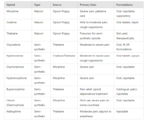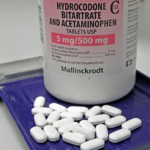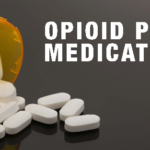Preventing hydrocodone abuse requires a comprehensive approach that addresses both individual behaviors and systemic factors related to opioid prescriptions, education, and support. Below are key strategies for preventing hydrocodone misuse and abuse:
1. Responsible Prescription Practices
Healthcare providers play a crucial role in preventing hydrocodone abuse by prescribing opioids carefully and educating patients on their proper use.
Prescriber Guidelines:
- Use Alternative Pain Management: Whenever possible, doctors should prescribe non-opioid pain relief options such as NSAIDs (e.g., ibuprofen, acetaminophen), physical therapy, or non-opioid medications (like gabapentin).
- Limit Prescriptions: If hydrocodone is necessary, doctors should prescribe the lowest effective dose for the shortest duration possible. Avoid refilling opioid prescriptions unless absolutely necessary.
- Monitoring Programs: Use state-run Prescription Drug Monitoring Programs (PDMPs) to track opioid prescriptions and detect potential misuse or “doctor shopping” (where individuals seek prescriptions from multiple providers).
- Patient Screening: Assess patients for risk factors of addiction, such as a personal or family history of substance abuse or mental health disorders, before prescribing opioids.
2. Educating Patients About Proper Use
Clear communication between healthcare providers and patients about how to use hydrocodone safely is essential in preventing abuse.
Patient Education:
- Explain Risks: Ensure patients understand that hydrocodone is a powerful and addictive opioid, even when taken as prescribed. Discuss the risks of overdose and addiction.
- Proper Usage: Instruct patients to follow the prescription exactly as directed. Warn them against increasing the dose or taking the medication more frequently without consulting their doctor.
- Avoid Sharing Medications: Patients should be told never to share their prescription with anyone else, even if they appear to have similar symptoms. Hydrocodone is prescribed based on individual needs, and misuse can lead to serious consequences.
- Proper Disposal: Educate patients on how to properly dispose of unused medications to prevent misuse. Many pharmacies, hospitals, and law enforcement agencies offer drug take-back programs or disposal locations.
3. Safe Storage of Medications
Proper storage of hydrocodone at home can prevent unauthorized access and accidental ingestion, especially by children or individuals prone to misuse.
Storage Tips:
- Secure Location: Store hydrocodone in a locked cabinet, drawer, or medication safe, out of reach of children, teenagers, or others who might misuse it.
- Keep Track of Pills: Monitor how many pills are remaining in your prescription to detect any unusual loss, which might indicate someone else is accessing the medication.
- Avoid Leaving Medications in Public Spaces: Don’t leave opioid medications in easily accessible locations like bathrooms or kitchen counters where others might see or take them.
4. Education and Awareness Campaigns
Raising public awareness about the dangers of opioid abuse and the safe use of prescription medications is a crucial component of prevention efforts.
Public Health Campaigns:
- Community Education: Governments, schools, and community organizations can run programs that educate the public about opioid risks, addiction warning signs, and the importance of using medications responsibly.
- School Programs: Implement programs in schools to teach young people about the dangers of prescription drug abuse. Early prevention is key, as experimentation with drugs often begins in adolescence.
- Employer Programs: Companies can provide resources and education for employees about opioid use and offer programs for those struggling with substance use disorders.
5. Addressing Risk Factors for Substance Abuse
Identifying and addressing the risk factors for substance abuse, particularly in individuals who are prescribed opioids, can reduce the likelihood of hydrocodone abuse.
Risk Reduction Strategies:
- Screen for Mental Health Disorders: Individuals with mental health issues like anxiety, depression, or trauma are at higher risk for opioid misuse. Healthcare providers should screen patients for mental health conditions and provide appropriate treatment, including therapy and non-opioid pain management.
- Treat Chronic Pain Safely: Patients with chronic pain conditions are at higher risk for opioid dependence. Offering multimodal pain management (e.g., physical therapy, cognitive-behavioral therapy, non-opioid medications) can help reduce reliance on opioids.
- Provide Counseling for High-Risk Patients: Patients with a history of substance use or other risk factors should be referred for addiction counseling or monitored closely if opioids are prescribed.
- Develop Coping Strategies: Teach individuals healthier ways to cope with pain and stress, such as mindfulness, exercise, and cognitive-behavioral techniques, to reduce reliance on opioids.
6. Monitoring and Intervention for At-Risk Individuals
Monitoring individuals who are taking opioids, especially those at risk for addiction, helps identify early signs of misuse and allows for intervention before abuse develops.
Monitoring Programs:
- Follow-Up Visits: Doctors should schedule regular follow-up visits with patients prescribed hydrocodone to evaluate how they are managing pain and to check for signs of dependence or misuse.
- Urine Drug Testing: In some cases, healthcare providers may use urine drug tests to ensure the patient is taking the medication as prescribed and not using illicit substances.
- Family Involvement: Encourage family members to monitor loved ones who are using hydrocodone for signs of misuse, such as taking more than prescribed, doctor shopping, or seeking out additional opioids from other sources.
7. Treating Early Signs of Hydrocodone Misuse
If a person shows signs of hydrocodone misuse or dependence, early intervention can prevent the development of addiction.
Early Intervention Strategies:
- Counseling and Support: If a patient shows signs of hydrocodone misuse, counseling, and therapy can help address the psychological aspects of drug use. Cognitive-behavioral therapy (CBT) is particularly effective in changing the thought patterns that lead to substance abuse.
- Switching Medications: Doctors can consider switching the patient to a non-opioid pain reliever if there are signs of misuse.
- Medication-Assisted Treatment (MAT): For patients showing early signs of dependence, MAT (using medications like buprenorphine, methadone, or naltrexone) can help manage cravings and prevent escalation into full-blown addiction.
8. Legislation and Regulations
Policy changes aimed at controlling the availability and use of prescription opioids can help reduce abuse.
Regulatory Measures:
- Stricter Prescription Rules: Governments and medical boards have implemented stricter regulations on how opioids like hydrocodone are prescribed, limiting the amount and duration of prescriptions.
- Prescription Drug Monitoring Programs (PDMPs): These programs allow doctors and pharmacists to track opioid prescriptions, making it more difficult for individuals to obtain multiple prescriptions from different providers.
- Over-the-Counter Naloxone: Increasing access to naloxone (Narcan), an opioid overdose reversal drug, can help save lives in the event of an overdose. Many states have made naloxone available without a prescription.
Conclusion
Preventing hydrocodone abuse involves a combination of responsible prescribing practices, patient education, proper medication storage, and early intervention for those at risk. It also requires broader efforts through public education campaigns and regulatory changes. By addressing the root causes of opioid misuse and promoting safer alternatives, individuals and healthcare systems can work together to reduce the risk of hydrocodone abuse and its potentially devastating consequences.
Pain Medications, Pain Relief, and Pain Management



